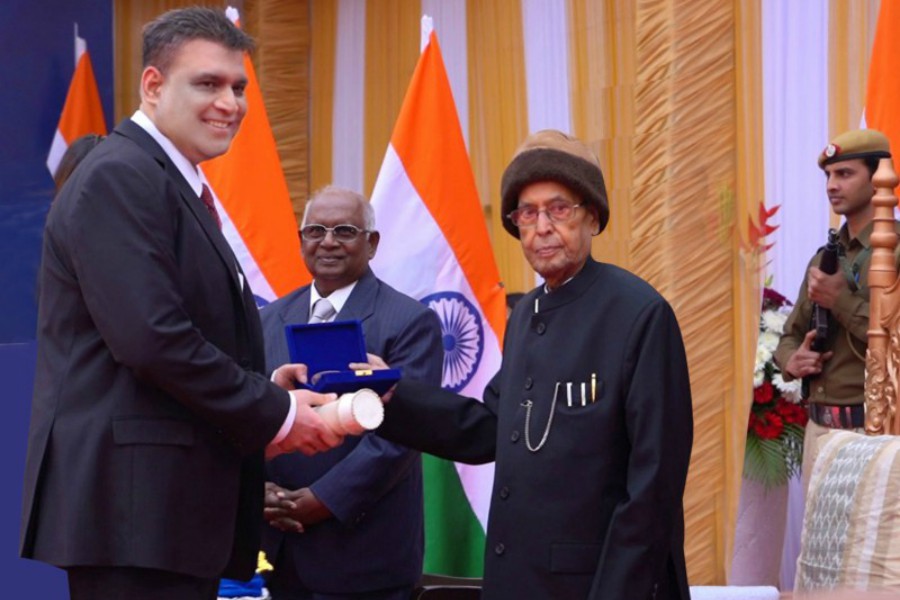
Digital transformation has rapidly become a hackneyed phrase in the technology world. Whatever industry vertical you operate in, you are likely to have either kickstarted the process, or perhaps for fear of being left behind, are exploring how to make the transformation a reality. Too often, however, companies keen on exploring digital innovations fail to understand how to pick out the right suite of technological solutions and processes that best meet their strategic goals. In truth, the array of digital business tools on offer can be dizzying in both scope and complexity. With every company now (almost) a technology company, the pressure to deliver innovation that can unlock the next phase of growth can be enormous.
But with the right guidance, a selective use of innovative solutions and deep industry knowledge, technology can unlock the art of the possible for a digital transformation. It was this sense of possibility that enticed Rakesh Rathi (a Presidential award winner) who has a technical engineering background to become a strategic partner and a “trusted” advisor to the C-suite of some of the biggest global firms across multiple verticals such as banking, manufacturing, insurance, retail, pharmaceuticals, engineering and consumer goods. The scale of business digitalization has undergone a seismic shift in recent years, aided by a pandemic that accelerated digital transformation by several years, inducing businesses to invest increasing sums on technology in the pursuit of a competitive edge. Indeed, spend on technology is expected to reach over $3.4 trillion by 2021, helping to connect around 50 billion devices by 2025. But interestingly, Rathi attests that many chief information and digital officers allocate around 70% of technology budgets to support functions, that help to run the business, compared to business innovation. “CIOs are therefore embracing a fundamental shift and reimagining their portfolio as a result. CIO and CDO are no longer a cost-center but also driving business strategy and profits” he says.
It is not just budgets that will require an overhaul in order to achieve digital transformation. “Customer-centricity will be the clincher on how new technologies are deployed,” Rathi says. Listening to your customers, and developing a strategy that is well-aligned to their interests and goals is a smart move in any business, but with the pandemic exposing the fault lines of a business’ operational agility, the need to develop customer-centric digital transformation models has never been more critical. For business leaders, a successful pursuit of business agility and customer-centricity means “balancing transformation, business drivers and technology with automated and innovative business models to increase market share, expand globally, cost savings, enhanced customer experience, better employee engagement and operational efficiency which will eventually drive shareholder value” he says. From an industry advisory perspective, customer-centricity means finding the most appropriate digital solutions for the business i.e services, products and support to the customer 24/7/365. That need not necessarily mean opting for the most sophisticated solution, particularly when it involves a company that has heard about digital transformation and wants to pursue it, but knows little about what solutions might deliver the best results. “Sometimes digital transformation and agility can be achieved with process changes coupled with minimal technology; it doesn’t always need the most expensive solution.”

But with many companies pouring millions into digital transformation, the risk of failure is high. “Too many companies put the cart before the horse, focusing on a specific technology, rather than doing the due dilligence of fitting the change into the overall business strategy first,” he says. The very first stage of any digital transformation strategy should be understanding the business goals of the organisation, part of which involves getting to know your employees and leaning on insider knowledge far more than external consultants. “Insiders often have a deep knowledge of how change will affect customer experience and can more effectively use business process management techniques to successfully facilitate change.” Tempting as it may be to throw money at outside expertise, there is very little substitute for the hard graft of getting to know your business to avoid the risk of misplaced and costly tech investment.
As with so many elements of business transformation, that process will inevitably ask a lot of a company’s leadership. Those that thrive in their quest for digital transformation are those who are open and holistic in their approach, adept at working around internal resistance, keen to take on calculated risks and challenges and willing to operate outside of their comfort zone. “I don’t look for an expert in a digital leader,” Rathi says, “a deep knowledge of the organisation that is focused on people, process and technology is far more important.”
With his background in Engineering and an EMBA from IMD, Rathi is able to combine technical knowledge and critical, analytical thinking with the business acumen he accrued at IMD. This somewhat rare combination gives him a credibility with clients because he can offer insights and industry best practices into the business strategy aligned with innovative technology across the C-suite. In most cases, his expertise is industry agnostic, but even intra-industry, the scope of solutions can differ widely according to the business culture.
With so much digital disruption still in store, Rathi’s expertise will continue to be in high demand and his skills in Cloud, 5G, e-Mobility, Internet of Things, Analytics, AI/ML and Robotics, among others, will continue to engage companies enticed by the new business models and opportunities these technologies can bring. Rathi is continually inspired by the pristine Swiss mountains that form the backdrop to the place he calls home, which give him the opportunity to indulge in his hobbies of trekking and skiing with his friends. This, together with the calm, composed and focused character he inherited from his father, means that businesses will continue to covet his contributions on their ever-winding digital journey.



